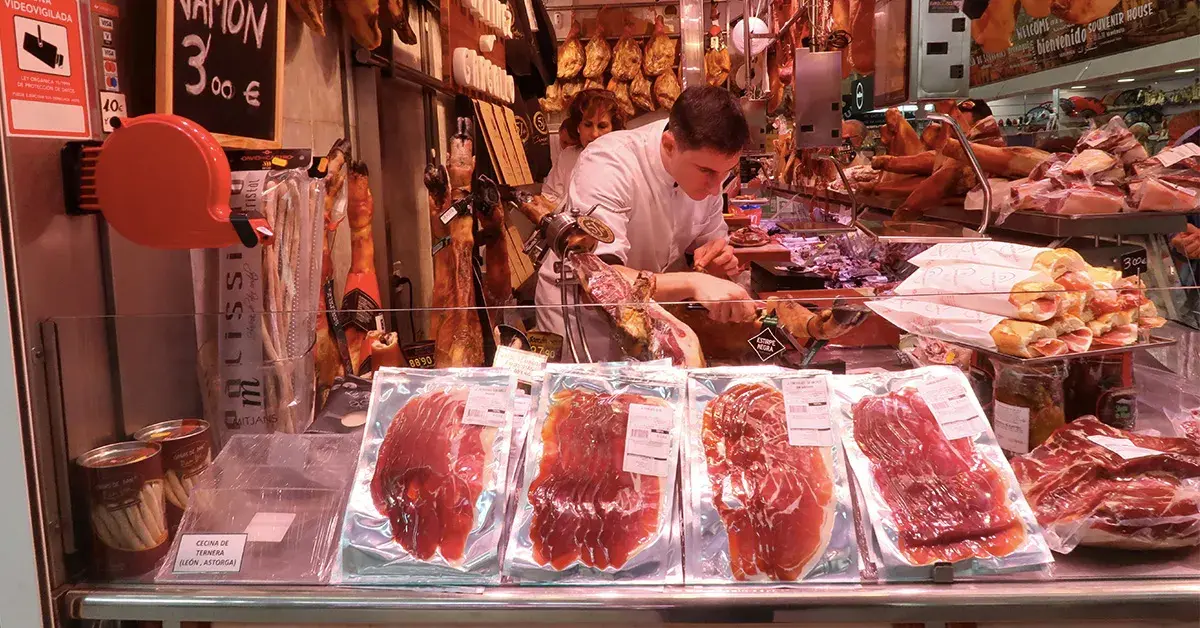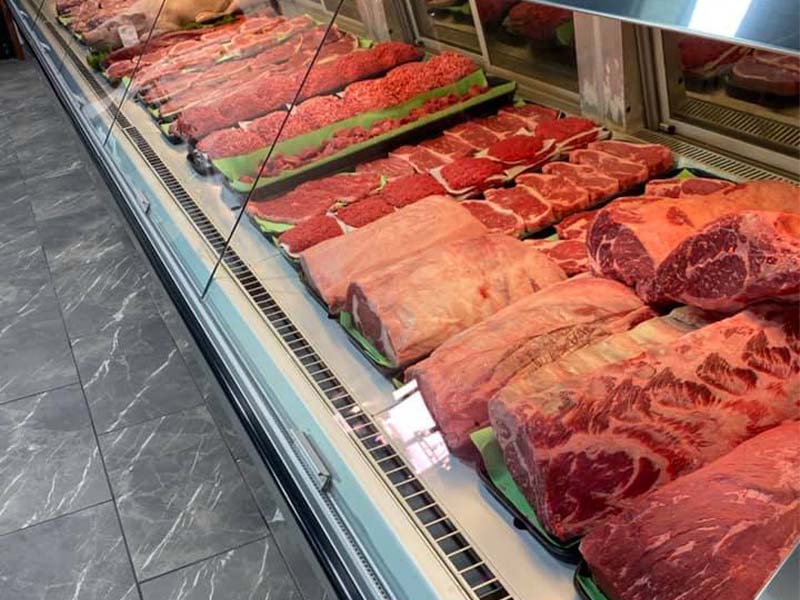Discover the Local Taste at Bagley Farms Meat Market Edwardsville IL: Fresh and Delicious
Discover the Local Taste at Bagley Farms Meat Market Edwardsville IL: Fresh and Delicious
Blog Article
Discover the Art of the Butcher's Cut in a Modern Meat Market
In the ever-evolving landscape of contemporary meat markets, the butcher's cut has actually transcended its typical roots, combining age-old craftsmanship with contemporary methods. Today's butchers are not merely processors of meat; they are well-informed artisans that stress sustainability and honest sourcing. Their knowledge in choose and preparing cuts customized to certain culinary requirements offers an exceptional dining experience. Yet, what absolutely sets the modern-day butcher apart is their ability to build a deeper link in between consumers and the origins of their meat. How do these masters balance custom with advancement, and what ramifications does this have for the future of meat consumption?
Evolution of Butchery Strategies
The development of butchery methods mirrors a rich tapestry of advancement and adjustment driven by advancements in innovation, adjustments in consumer demand, and a deeper understanding of meat scientific research. Historically, butchery was a craft passed down with generations, with techniques refined over centuries to make the most of yield and flavor. The industrial change ushered in mechanization, transforming typical methods and enabling large processing.
The mid-20th century saw butchery strategies further fine-tuned by scientific understandings right into muscular tissue biology and meat aging, enhancing both inflammation and taste. Advancements like vacuum cleaner product packaging and refrigeration expanded product shelf-life, permitting butchers to branch out offerings and enhance quality assurance. This period additionally noted the increase of specific equipment, such as band saws and meat slicers, which enhanced accuracy and efficiency in meat processing.

Computerized systems now help in tracking animal provenance and optimizing cuts to satisfy details customer preferences. Additionally, a rebirth in artisanal butchery has actually arised, mixing typical skills with contemporary expertise to provide to consumers looking for honest and lasting meat options.
Comprehending Meat Cuts
Comprehending the ins and outs of meat cuts is essential for both butchers and customers seeking high quality and worth. For butchers, specific cuts mirror skill and respect for the craft, ensuring very little waste and optimum return.

Comprehending muscle composition is critical; muscular tissues utilized extra frequently by the pet tend to be tougher and are best fit for sluggish food preparation methods, while less-used muscle mass, like those found in the loin, are extra tender and perfect for grilling or roasting. Knowledge with these differences encourages consumers to make informed selections, enhancing their cooking undertakings.
Choosing High Quality Meat
Choosing the appropriate meat includes greater than simply choosing a visually appealing pop over to this site item from the display screen. bagley farms meat market edwardsville il. The art of picking high quality meat requires a critical eye and understanding of particular features that represent freshness and quality. First of all, take note of the color; beef should have a bright, cherry-red hue, while lamb must display a soft pink tone, and pork a pale pink. This indicates the meat is fresh and hasn't been subjected to oxygen for as well long.
Second of all, take into consideration the marbling, which describes the white flecks of fat within the muscular tissue. Appropriate marbling is an essential indicator of inflammation and taste, as it melts find out throughout cooking, improving the meat's juiciness. Remember, greater marbling usually correlates with exceptional top quality cuts, such as USDA Prime.
Texture is another essential aspect; meat needs to really feel firm to the touch, not slimy or overly soft. Additionally, be conscious of the fragrance. Fresh meat ought to have a tidy, neutral scent, free from any kind of sour or repulsive odors.
Coupling Cuts With Cooking Techniques

On the other hand, tougher cuts like brisket and chuck roast are abundant in collagen, which breaks down into gelatin when prepared slowly. These cuts are excellent for braising or sluggish roasting, enabling the meat to tenderize gradually and establish deep, intricate flavors. In a similar way, cuts such as short ribs and pork shoulder prosper with slow-cooking methods, where extended cooking times transform their durable textures right into delicious recipes.
Lamb shanks and oxtail, which call for prolonged cooking to tenderize, are use this link best candidates for cooking or slow-moving simmering. These methods coax out rich, passionate tastes while maintaining dampness. By understanding the unique qualities of each cut, chefs and home chefs alike can elevate their cooking productions, ensuring each recipe is both satisfying and unforgettable.
The Butcher's Duty Today
Navigating the advancing landscape of the modern-day meat market, the butcher's role today prolongs beyond simple preparation of cuts. Contemporary butchers are culinary craftsmens, instructors, and supporters for lasting practices.
Along with crafting accurate cuts, butchers currently involve straight with clients, supplying cooking recommendations and customizing options to suit individual needs and choices. Their competence in meat aging, marbling, and flavor profiles encourages consumers to make informed decisions, boosting their cooking experiences. This customized solution exhibits the butcher's progressing function as a trusted expert in the cooking area.
Additionally, butchers are critical in lessening waste, making use of whole pets to produce diverse products such as sausages and stocks. This extensive strategy not just values the pet yet also lines up with contemporary sustainability goals. By doing this, the modern-day butcher embodies both custom and development, adjusting to an ever-changing market while preserving the creativity and honesty of their craft.
Verdict
The contemporary butcher's craft delicately weaves traditional methods with modern developments, stressing lasting methods and ethical sourcing. Proficiency in recognizing diverse meat cuts and quality signs empowers butchers to supply enlightened suggestions, aligning details cuts with ideal food preparation techniques. This knowledge not only elevates cooking experiences but also enhances the link between customers and the beginnings of their food. By honoring historical techniques while embracing modern demands, the butcher's role continues to be crucial in today's sophisticated meat market (bagley farms meat market edwardsville il).
Report this page